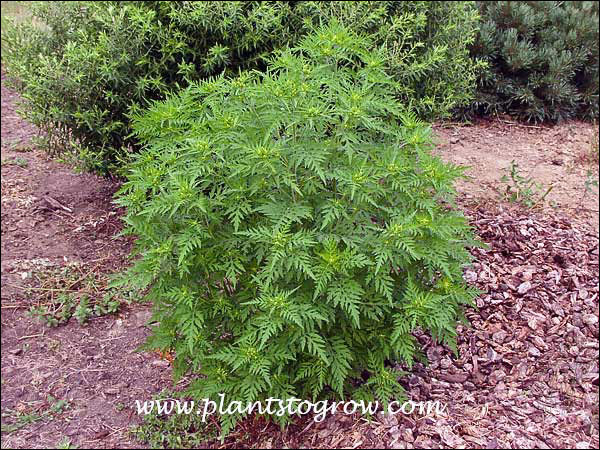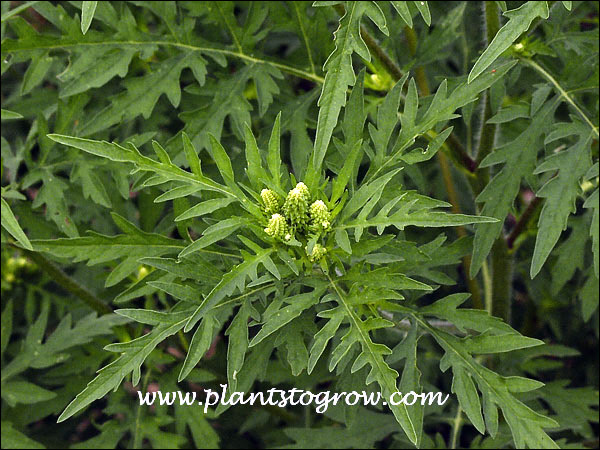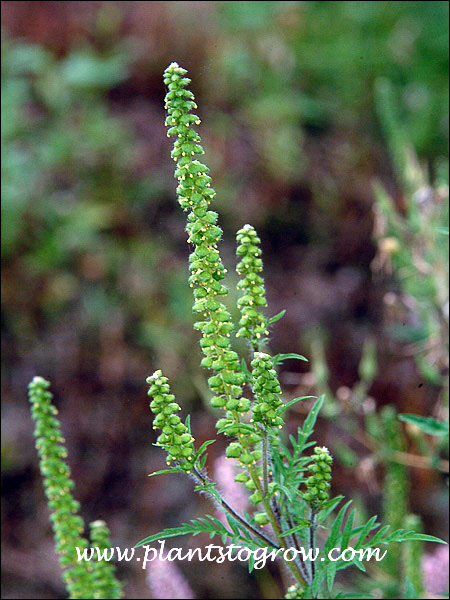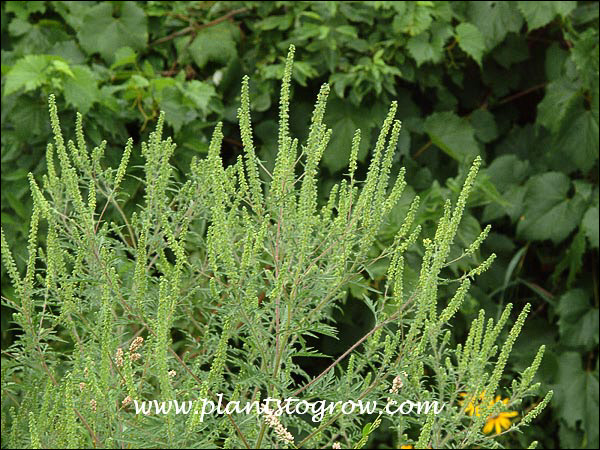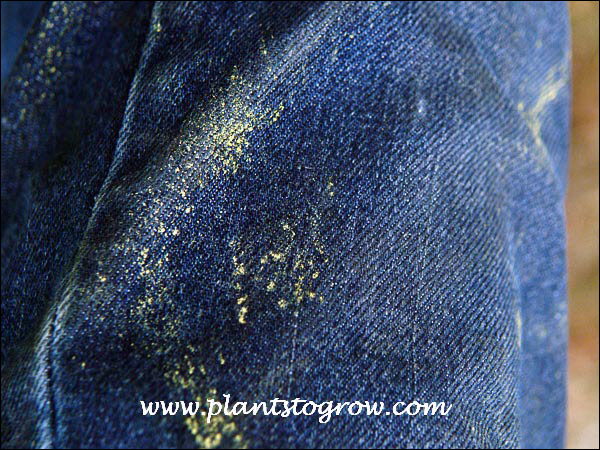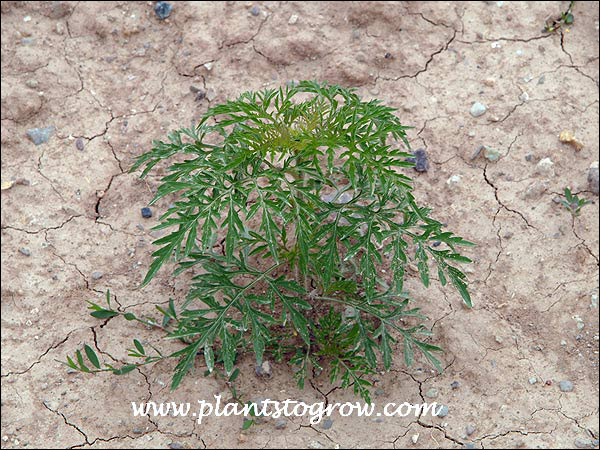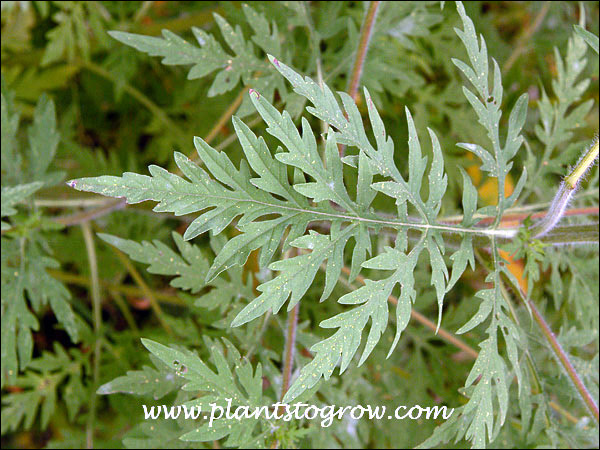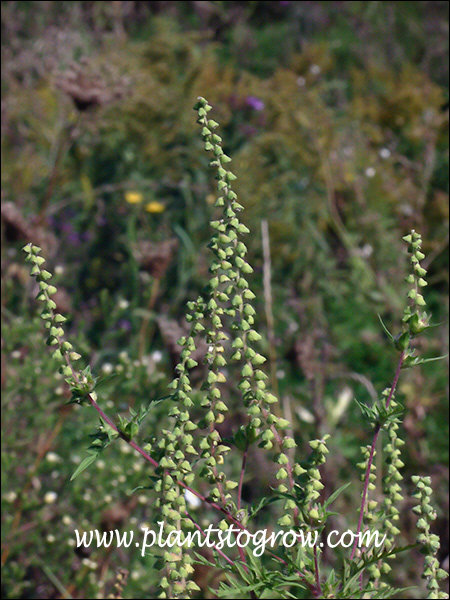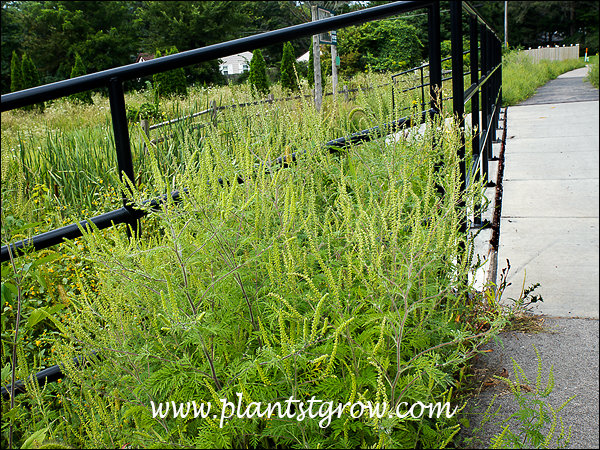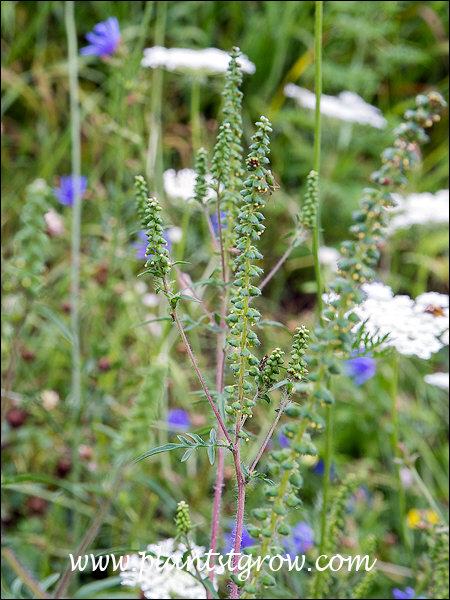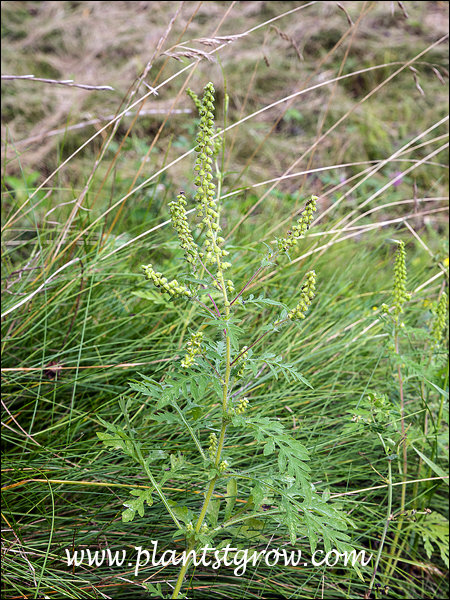| Description | This plant produces light wind blown pollen that causes hay fever. |
|---|---|
| Plant Type | All Plants, Weeds |
| Sunlight | full |
| Moisture | very tolerant |
| Soil & Site | very tolerant |
| Flowers | Separate male and female flowers are on the same plant (monoecious). Male flowers are abundant up and down the side of the spike (racemes), female are in the axial of the lower leaves. Pollinated by air-bore pollen. Flowers are green with yellow pollen |
| Leaves | Has attractive fern-like, deeply cut, foliage. |
| Stems | stems can have a purple tinge |
| Roots | shallow root system |
| Dimensions | 1-5 feet, most common in the mid range |
| Propagation | spread by seeds |
| Native Site | Native to Europe, wide spread especially in the eastern part of the USA |
| Misc Facts | Ambrosia means the "Food or nectar of the God's. How a wretched plant like this obtained this name is beyond me. Artemissifolia describes the deeply cut leaves. |
| Author's Notes | During the "season for sneezin", the people afflicted with Hay fever, blame their problem on the stately Goldenrod. They sneeze, see the yellow flowers of the Goldenrod and put two and two together and get five. The pollen of the Goldenrod is heavy and doesn't cause allergy problems. The Ragweed’s pollen is very light and is one of the main vectors of these problems. I always show this plant to my Horticulture classes, they are surprised to learn what really causes hay-fever. |
| Notes & Reference | #14-Hedge maids and Fairy Candles (Jack Sanders), #19-Common Weeds ( USDA Agricultural Research Service) |

Cart
